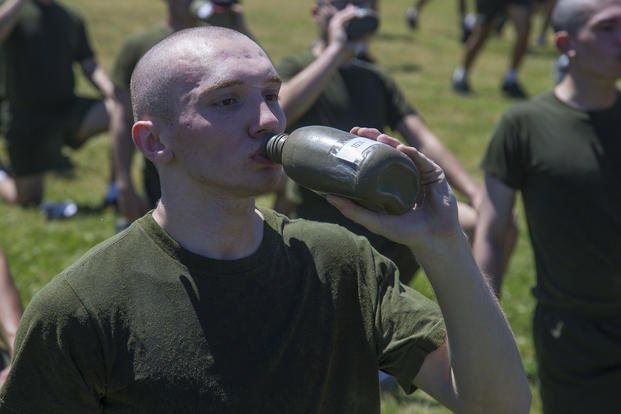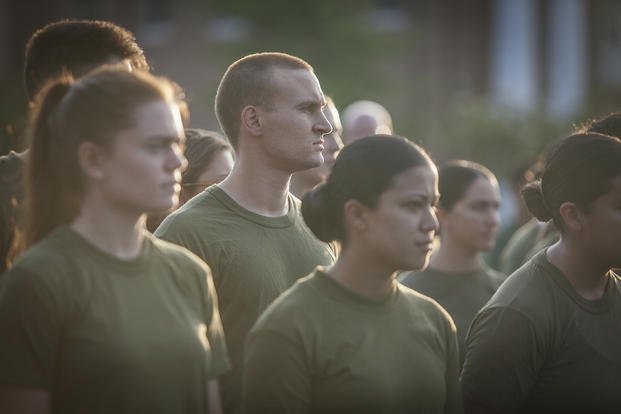How many of you have taken a physical fitness test (PFT) and did not score as well as you have during your own workouts? Often by the end of a PFT, you will be fatigued, and the last cardio test will be slower than normal workout scores.
Here is an email I received that we all can relate to:
Hey, Stew - I normally run a 9-minute zone 1.5 mile, but after pull-ups, push-ups and sit-ups testing portion, I can only get 10 minutes on the 1.5-mile run. What gives?
This is very common. Once I realized you need to have a strategy for taking the PFT, my scores started improving. Of course, I was doing more PFTs in order of the test I was about to take, so I am sure getting in better shape helped with my PFT stamina.
First of all, you have to train the way you test.
If your PFT requires you to perform weights or PT exercises first, then your workouts should mimic the order of the test as best you can.
For example, you should do your PT weight training first, then follow with the running portion of your workout. By arranging the workouts this way, you will get the body used to running when the upper body is pumped with blood.
During the test, you should understand about PFT transition. If you can loosen your upper body by stretching the arms, chest, shoulders and back muscles before running, that will help with your more natural running state. Also loosen up your legs by doing a short run so you get the blood from your upper body down to your legs. This transition takes about 4-5 minutes, and usually you get about 10 minutes to prepare for the last event of the PFT.

Stay Hydrated and Cool
If you can keep your heat down, your performance will improve. Be well-hydrated days before the event and sip water or a sports drink during the test to stay cool. The sports drink or fruit will help you keep blood-sugar levels high during the test. By doing this, you will have energy to push yourself on the last event of the PFT. Between all events, hold on to cold water bottles (even ice filled) to keep the colder blood circulating to your core. You will be amazed at how well this works.
Learn How to Pace Yourself
The pacing exercises in this test are the sit-ups and the running portion. These require a steady pace and not a fast starting pace. Many times, people score 30 sit-ups in 30 seconds but cannot get another 30 in the next 1:30 in a two-minute test. By simply dropping your initial pace to 20 in 30 seconds, you can score 80 sit-ups in two minutes more easily.
Same for the running. You never sprint the first quarter-mile of a 1.5-mile run. Find your goal pace and stick to it by training at that pace at every distance you run. For example, if your goal is to run a 10:30 1.5-mile run, then you have to run a quarter-mile in 1:45, a half-mile in 3:30 and a mile in seven minutes. Learn the pace by practice.
PT Tips
Exert on the up: When doing any of the PT exercises, you have one advantage -- gravity. Gravity will take you down faster with no effort, so do not waste energy by slowly lowering yourself to the bottom of the exercise. If doing sit-ups, let gravity take your back to the floor by relaxing the abdominal muscles. If doing push-ups, relax the chest and triceps and fall to the counter. The same goes for pull-ups, but you must semi-control your descent here, as it can produce swinging that will throw you off your best scores.
So the things to remember are:
- Go into the PFT well-prepared.
- Make sure you stay hydrated and cool.
- Stretch well (both upper and lower body) before running.
- Do not forget to learn your pace and pace yourself during the test.
Stew Smith is a former Navy SEAL and fitness author certified as a Strength and Conditioning Specialist (CSCS) with the National Strength and Conditioning Association. Visit his Fitness eBook store if you're looking to start a workout program to create a healthy lifestyle. Send your fitness questions to stew@stewsmith.com.
Want to Learn More About Military Life?
Whether you're thinking of joining the military, looking for fitness and basic training tips, or keeping up with military life and benefits, Military.com has you covered. Subscribe to Military.com to have military news, updates and resources delivered directly to your inbox.


















